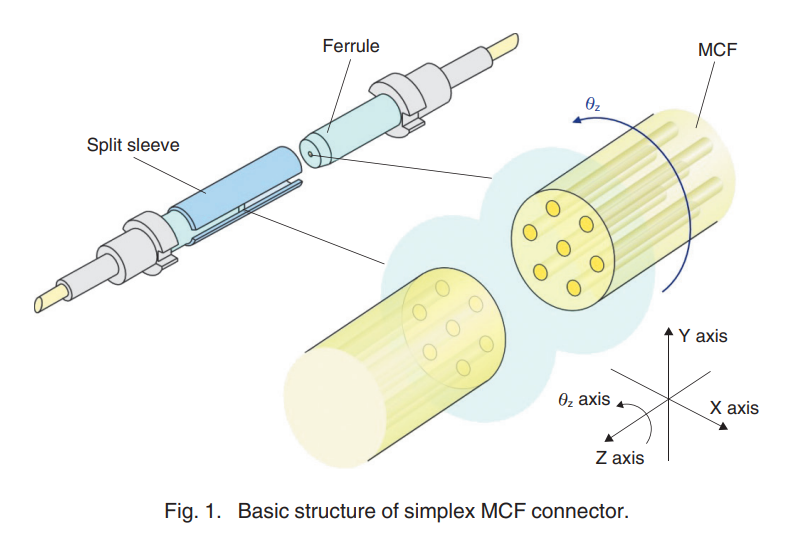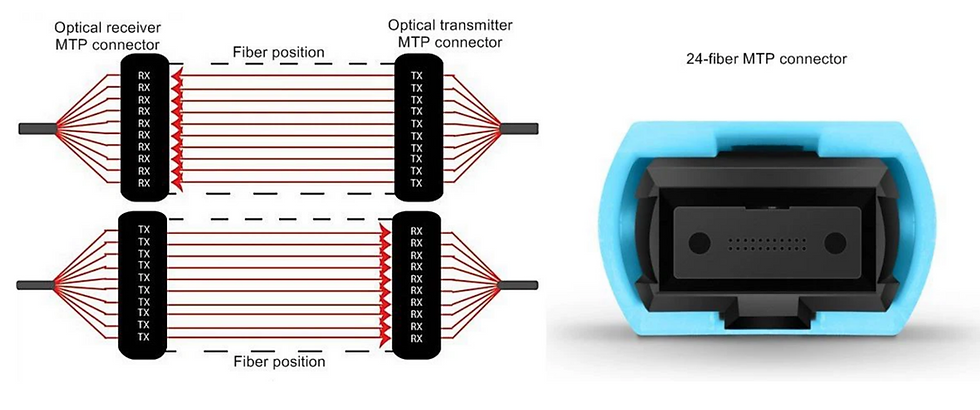Coupled and uncoupled multicore fibers for future ultra-high capacity optical communication
- Nguyen Tran Tien
- Sep 2
- 3 min read
Multicore fibers (MCFs) are a promising technology for next-generation optical communication that can meet the exponentially increasing demand for data capacity. By incorporating multiple cores into a single optical fiber, MCFs enable Space-Division Multiplexing (SDM), which increases transmission capacity by creating multiple parallel data channels. MCFs can be classified into two main types: uncoupled and coupled.

Uncoupled Multicore Fibers
Uncoupled multicore fibers are designed to maintain minimal interaction between adjacent cores. This is achieved by increasing the distance between the cores (core pitch) or by using a trench-assisted refractive index profile to confine the light more effectively within each core.
How They Work: Each core functions as an independent, single-mode fiber (SMF). This allows signals to be transmitted on separate cores without significant interference, and conventional optical communication systems can be used with minimal modification, often requiring only a "fan-in/fan-out" device to transition between the single-fiber and multicore sections.
Advantages:
Low Inter-Core Crosstalk (IC-XT): This is their primary advantage. With low crosstalk, signals in each core remain isolated, simplifying signal processing and avoiding the need for complex digital signal processing (DSP) techniques like Multiple-Input Multiple-Output (MIMO).
Compatibility: They are more compatible with existing single-mode fiber systems, simplifying integration into current network infrastructure.
Higher Signal-to-Noise Ratio (SNR): The low crosstalk allows for a better SNR, which is crucial for long-haul transmission.
Disadvantages:
Large Cladding Diameter: To ensure low crosstalk, the cores must be spaced far apart, which often requires a larger-than-standard cladding diameter (typically 125 µm), potentially impacting mechanical reliability and compatibility with existing cabling infrastructure.
Limited Core Density: The need for a large core pitch restricts the number of cores that can be packed into a single fiber, limiting the potential capacity increase.
Coupled Multicore Fibers
Coupled multicore fibers are designed with cores placed in close proximity, allowing light to intentionally couple between them. This creates a single multimode waveguide where signals propagate as "supermodes," which are combinations of the individual core modes.
How They Work: Signals launched into one core quickly distribute their power across all cores. The receiver must use sophisticated MIMO-DSP to untangle the mixed signals and recover the original data streams. This is similar to how few-mode fibers (FMFs) operate.
Advantages:
High Core Density: The close core proximity allows for a significantly higher number of cores within the standard 125 µm cladding diameter. This increases the overall spatial channel density.
Mitigation of Impairments: The strong, random coupling between cores can reduce the negative effects of mode-dependent loss (MDL) and differential mode delay (DMD), which simplifies compensation requirements and improves overall transmission performance. It can also help suppress nonlinear impairments.
Disadvantages:
High Inter-Core Crosstalk: This is a fundamental characteristic and a major challenge. The high crosstalk necessitates the use of complex and computationally intensive MIMO-DSP at the receiver, increasing power consumption and system complexity.
Increased Complexity: The need for complex DSP, specialized amplifiers, and fan-in/fan-out devices adds to the cost and complexity of the system.
Future Outlook
Both uncoupled and coupled MCFs are being researched for future ultra-high-capacity optical communication. The choice between them depends on the specific application and trade-offs.
Uncoupled-MCFs are a strong candidate for long-haul transmission and submarine cables, where low crosstalk is critical for maintaining signal integrity over thousands of kilometers. Their compatibility with existing technologies also makes them an attractive option for more straightforward system upgrades.
Coupled-MCFs are being explored for high-density, short-to-medium-haul networks where a very high spatial channel count is a priority and the power and complexity of MIMO-DSP are more manageable. Combining few-mode cores with coupled multicore designs (Few-Mode Multicore Fibers, FM-MCFs) is also a key area of research, aiming to combine the benefits of both technologies for a massive increase in capacity.
Ultimately, achieving a robust and efficient MCF system will require a balance of optical fiber design, advanced signal processing, and new component technologies like multicore amplifiers and fan-in/fan-out devices to address the inherent challenges of each approach.



Comments